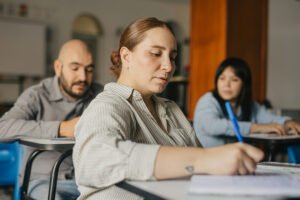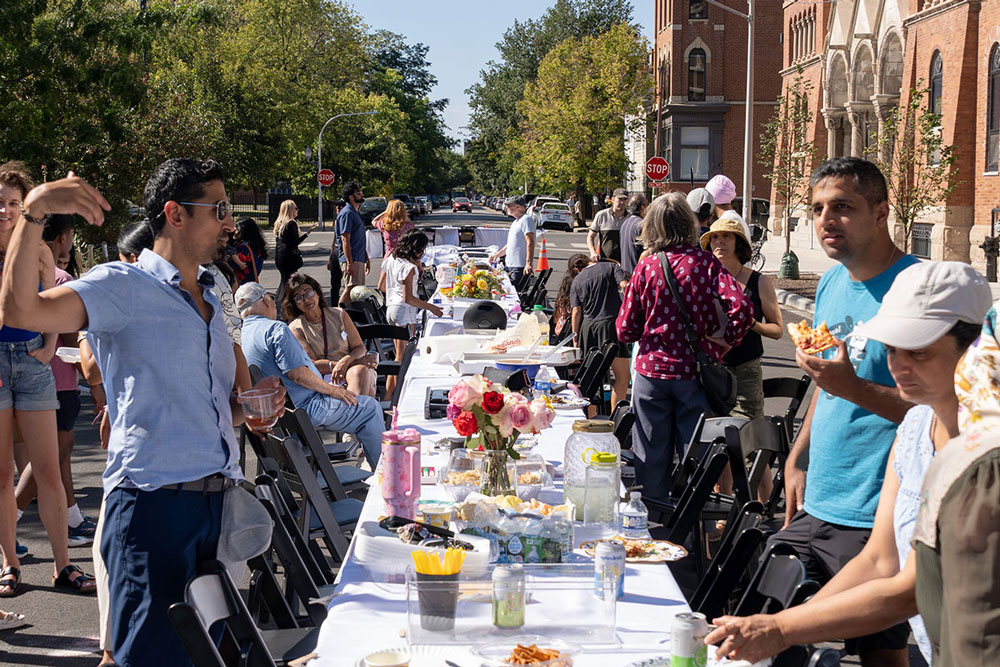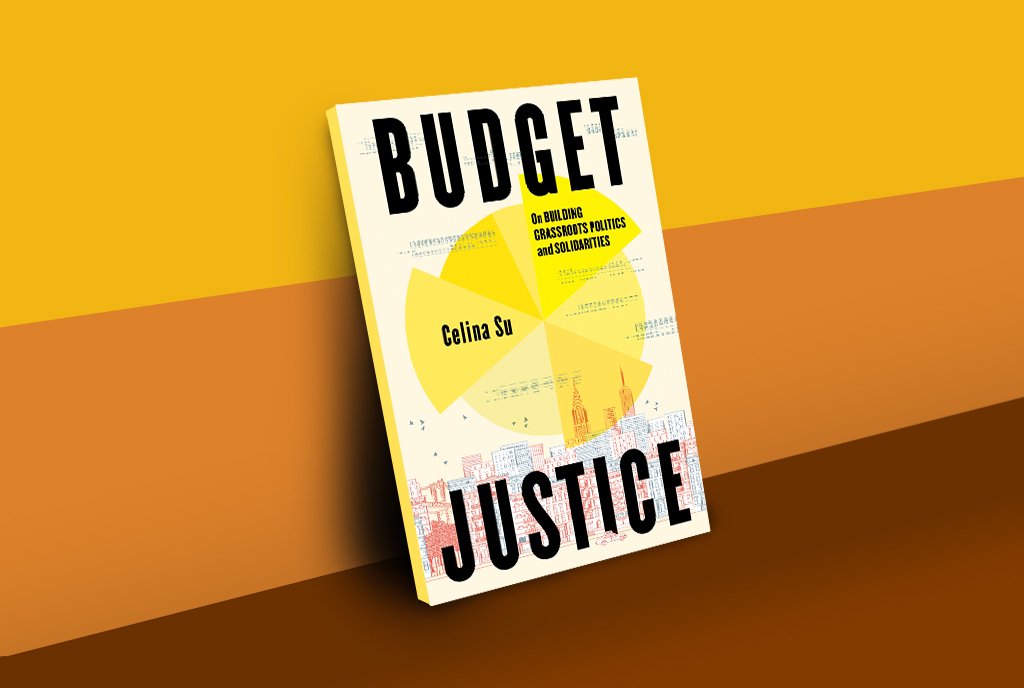
Editors’ note: This article, first published in print during Mar/Apr 2017, has been republished for Nonprofit Quarterly with minor updates.
This is the first of a two-part article.
“When I was my oldest daughter’s age, I was already in ‘prison.’ And I knew that I was there for no crime other than the color of my skin and the shape of my eyes. I knew, too, that the excuse my captors gave—that I was there for my own protection—was sheer hypocrisy, that there was some deeper and more sinister reason for my incarceration…
Perhaps some of us were ashamed that it had ever happened. We were like the victim of a rape—we could not bear to speak of the assault, of the unspeakable crime. This for many years we had not even spoken of our imprisonment. And when we did speak of it, we were guarded. We dared not fully reveal the depth of our feelings about it.”—Edison Uno, on the incarceration of Japanese Americans during World War II, 1971
IN 1970, Edison Uno, a Nisei (second generation Japanese American) activist with the civil rights group the Japanese American Citizens League (JACL) proposed something audacious: The JACL should champion an effort to secure monetary redress from the U.S. government for the 120,000 Japanese Americans who had been imprisoned without charges, trials or evidence of wrongdoing during World War II.
It was a bold idea not only because Japanese Americans (or Nikkei, a term used more broadly to refer to all generations of Japanese Americans) were a small minority (constituting only 0.01 percent of the population) with little political clout, but also because most Americans did not distinguish between United States citizens of Japanese descent and citizens of Japan, the nation that 25 years earlier had been the enemy.
Intracommunity dynamics also made the prospect of redress difficult to envision: Japanese immigrants (Issei) had to liquidate their farms and businesses within days after the government ordered them to leave their west coast homes in 1942. Most never regained their economic grounding. Nisei, who were youth or young adults during the war, harbored lingering but often unarticulated emotional and psychological scars from their wartime incarceration. By 1970, Japanese Americans were just beginning to get economic and social footholds after the trauma of the war. Their wartime incarceration was not a subject that most Nikkei wanted to revisit
.
Th JACL’s leadership, in addition, posed a challenge. During the war, the JACL advised Nikkei that cooperating with the government was the most effective way to demonstrate loyalty. Many Japanese Americans, however, believed that the JACL had betrayed Issei leaders and dissenters by reporting them to the government.
GRASSROOTS FUNDRAISING WAS NECESSARY FOR THE MOVEMENT’S SURVIVAL, SINCE THE ISSUE WAS INITIALLY CONTROVERSIAL AT BEST, TABOO AT WORST.
Despite these obstacles, the moral urge to right this decade sold civil liberties violation motivated Uno and a handful of advocates—including young Sansei (third-generation Japanese Americans) activists influenced by the civil rights and anti-war movements—to build community support for redress.
They eventually focused their efforts through groups that worked for redress, a few of which are profiled here. Each fundraised in its own way, targeting their membership bases and sectors of influence. Grassroots fundraising was necessary for the movement’s survival, since the issue was initially controversial at best, taboo at worst. The people most affected by the unjust World War II incarceration—Issei and Nisei who had been imprisoned in the camps and their children—would need to support the movement financially and politically to right this great wrong.
MOVEMENT HISTORY
Many Japanese American activists, though, believed that a commission would delay redress even further. After all, Issei elders, who bore the brunt of economic losses caused by the wartime incarceration, were dying daily. Most had to rebuild their lives after the war with few if any assets in a country that remained hostile towards them. Redress for that generation would be very meaningful. But the JACL ultimately decided to follow the Congress members’ advice and push for a commission in order to move forward on the legislative front.
Warriors for Justice
Not all JACL members, however, supported the idea of a commission. Dissenting members of the Seattle JACL chapter formed another group, the National Council for Japanese American Redress (NCJAR), initially to directly pursue redress legislation. Chicago-based activist William Hohri led NCJAR, which eventually focused on obtaining redress through a class action lawsuit. Believing that the judicial branch was the appropriate avenue to address reparations for the constitutional violations Nikkei suffered, NCJAR secured a Washington, D.C. law firm to represent former incarcerees. To retain the firm, NCJAR had to raise $75,000—the equivalent of $236,080 in 2017 dollars. Hohri devised an ambitious, culturally-rooted campaign to raise the money needed to cover these costs.
In their book, Achieving the Impossible Dream: How Japanese Americans Obtained Redress, Mitchell T. Maki, Harry H.L. Kitano and S. Megan Berthold write: First, the [fundraising campaign] openly described its lawsuit as
being risky. Hohri thought that this, along with asking for money only when it really needed to, helped establish the NCJAR’s credibility and build a solid basis of support. Second, the NCJAR did not solicit foundations or attempt to retain a pro bono law firm. Hohri was convinced that the members of the Japanese American community who were affected had to be the ones to finance the effort. If he could not raise the money from them, then the lawsuit would be dropped. 1
NCJAR invoked Japanese culture in its fundraising campaign: “We came up with the idea of using the classic Japanese story of the ‘47 Ronin,’” recounted Hohri. “Ronin are masterless samurai. In the story, 47 ronin avenge the injustice which led to their master’s death.” NCJAR recognized donors who contributed $1,000 or more as “ronin.” “NCJAR’s contributors were ‘masterless’ citizens seeking to right a past wrong.”2
1 Mitchell T. Maki, Harry H.L. Kitano and S. Megan Berthold. Achieving the Impossible Dream: How Japanese Americans Obtained Redress. (Board of Trustees of the University of Illinois, 1999), 123. 2 Ibid.
NCJAR fundraised primarily via mail (meaning snail mail, as email did not exist). Building on the Christmas card mailing list that he and his wife had developed over the years, Hohri eventually expanded the list to include 3,500 people. The campaign was successful: 65 “ronin” contributed, and NCJAR raised over $400,000.”3 That amount is the equivalent to nearly $1 million in today’s dollars.
The Grassroots Movement Grows
As NCJAR focused on a class action lawsuit and the JACL centered attention on the establishment of a federal commission, a grassroots group led by former incarcerees and younger Sansei activists in Los Angeles’ Little Tokyo neighborhood formed to organize Japanese Americans and other Asian Americans around redress. Though organizing community education programs about reparations, they also sought to link the effort to other groups who had suffered because of United States government policies. The group became known as the National Coalition for Redress and Reparations (NCRR) and explicitly called for monetary redress.
Meanwhile, the idea of an investigative body transformed from idea to reality. In 1980, President Jimmy Carter signed legislation creating the Commission on Wartime Relocation and Internment of Civilians (CWRIC) whose mandate was to review the forced relocation and detention of Japanese Americans and to recommend appropriate remedies.
Sign up for our free newsletters
Subscribe to NPQ's newsletters to have our top stories delivered directly to your inbox.
By signing up, you agree to our privacy policy and terms of use, and to receive messages from NPQ and our partners.
Between July and December 1981, the CWRIC conducted 11 hearings in 10 cities throughout the United States. NCRR members took the lead in recruiting and preparing former incarcerees to testify. Most Nikkei who had been incarcerated during the war had not talked much, if at all, even to their children and grandchildren, about this traumatic event. In addition, few Issei and Nisei were accustomed to public speaking, let alone about such an emotionally charged subject. NCRR activists helped former incarcerees prepare testimony for the CWRIC hearings, which became public forums for Nikkei to acknowledge the injustice of their wartime incarceration and to articulate, often for the first time, their anger.
Emi Somekawa, a founding member of NCJAR, was a nurse living in Portland at the time of the war. She recounted in her testimony the conditions at the Portland Assembly Center, a quickly built camp at the Pacific International Livestock and Exposition Center:
The Portland Assembly Center was terrible. It’s just amazing how people can think of putting another group of human beings into a place like that. There was so much horse and cow manure around. We were put into a cubicle that just had plywood walls and it was a horse stall with planks on the flour with about an inch of space between them. You’d find grass growing through the planks already… We lived in a horse stall from May to September [1942], and my son was born in a horse stall. It was terrible, and that stench that came up from the ground, you know, was just terrible.
The hearings changed the dynamics of the budding redress movement because they allowed Japanese Americans to share pent-up emotions about their imprisonment and losses. Before the hearings, redress was a cause championed mainly by Sansei activists. After the hearings, a groundswell of Japanese American community support for redress developed. Soon after the hearings, the Rafu Shimpo, a Nikkei community newspaper in Los Angeles, conducted a survey regarding redress. Ninety percent of respondents said they favored monetary compensation.
Activists Raise Money from the Community NCRR consisted of committed and passionate volunteer activists who carried out the bulk of the organization’s work, including its fundraising, immediately directing all available resources to its organizing and community education efforts.
“We never had staff so our financial needs were limited,” said NCRR’s Alan Nishio. “We would meet in office space that others had available. We would use resources of members who were employed. Our main costs were mailing and printing, things like that.” Another NCRR activist, Kathy Masaoka, recalls, “[Th group] relied a lot on the generosity of organizations. We met at Little Tokyo Service Center and the Japanese American Community and Cultural Center a lot. They never charged us. We even used computers there to do some of the work…on our mailing list.”
NCRR organizers also paid out of pocket for expenses as needed. “We kind of covered whatever costs arose; we were used to doing that,” explained Nishio. “That was probably the way we handled things until the redress commission hearings.”
For the most part, NCRR only solicited people by mail about once a year, usually around the annual “Day of Remembrance” events, held to commemorate the February 19 anniversary when President Franklin Roosevelt issued the executive order that set the mass incarceration into motion. While the event was free, the invitation mailed to NCRR supporters was formal-looking, reflecting the solemnity and importance of the occasion, and included a donation envelope. People often sent donations even if they did not attend the event. NCRR’s treasurer, Jim Matsuoka,
sent thank you notes to donors as well as updates on the campaign. “And then they would donate again,” says Masaoka, demonstrating that communication was key to staying connected to donors and deepening their investment in the cause.
COMMUNICATION WAS KEY TO STAYING CONNECTED TO DONORS AND DEEPENING THEIR INVESTMENT IN THE CAUSE.
Fundraising Without Saying What You’re Raising Money For At the same time the redress movement was gaining community traction in the early 1980s, a group of mainly young Sansei lawyers was working, initially in secret, on a parallel effort to re-open the legal cases of three Nisei men—Fred Korematsu, Gordon Hirabayashi and Min Yasui—who were convicted during World War II for defying the government’s orders targeting Japanese Americans.
Nearly 40 years after the U.S. Supreme Court upheld the men’s convictions and validated singling out a group for imprisonment only because of its ethnic background, Aiko Herzig Yoshinanga, a researcher for the CWRIC, and Peter Irons, an attorney and professor writing a book about the wartime Japanese American Supreme Court cases, uncovered explosive documents in the National Archives. They found proof that during World War II, government attorneys intentionally suppressed evidence favorable to Japanese Americans and argued to the Supreme Court that Japanese Americans’ loyalty to the United States was suspect, even when they knew that was false.
Based on this newly uncovered evidence, Korematsu, Hirabayashi and Yasui, backed by teams of young largely Japanese American attorneys, re-opened their decades-old cases.
Several of the mass incarceration’s architects were politically powerful in the early 1980s. They were unrepentant and outraged by the growing redress effort. If news spread about these new lawsuits resurrecting the government’s flimsy justifications for the wartime incarceration, the young attorneys feared that critical evidence implicating these individuals might disappear from the National Archives. So, the lawyers had to keep their efforts secret before filing their cases.
The legal teams that represented Korematsu, Hirabayashi and Yasui worked pro bono, but still had administrative and travel expenses. One of Korematsu’s volunteer attorneys, Don Tamaki, was at the time the executive director of the Asian Law Caucus, a legal service and advocacy group in San Francisco. He led the lawyers’ fundraising efforts with the added challenge of not being able to reveal why they needed money.
Tamaki did not have extensive individual donor fundraising background, but he took the common-sense approach of fist approaching an inner circle before asking strangers.
“We had lots of friends and family who trusted us—reputations mattered. They knew that we weren’t going to run off to have a Hawaiian vacation with their money,” recounts Tamaki. “We would just say, ‘We can’t tell you what this is about but it’s really big.’” Because of their strong relationships with potential donors, they succeeded in raising critical initial funding, even though the donors did not know exactly what the lawyers were doing.
Once the cases were public, the news media disseminated stories more broadly about the litigation, as well as information about the wartime incarceration. Fundraising continued. The team used letters, telephone calls and mass mailings to generate donations, most coming from contributors in the San Francisco Bay Area, though the legal cases were filed in San Francisco, Seattle and Portland. The attorneys returned to donors who gave during the “secret” phase, asking them to contribute again. Many of them did. Overall, contributions were not huge—many were between $50 and $500. Nevertheless, Tamaki estimates that the legal team raised about $50,000 in total.
“Th Japanese-American community really funded it,” says Tamaki of the legal work to overturn Korematsu, Hirabayashi and Yasui’s convictions, showing again that the people who were most affected by the wartime incarceration were at the forefront of financing the effort to obtain justice.
Rona Fernandez has worked with social justice non-profits for the past 20 years, always with fundraising as a part of her work. Stan Yogi has more than 26 years of experience with non-profit organizations in fundraising and grantmaking. Both are senior consultants with Klein & Roth Consulting.












